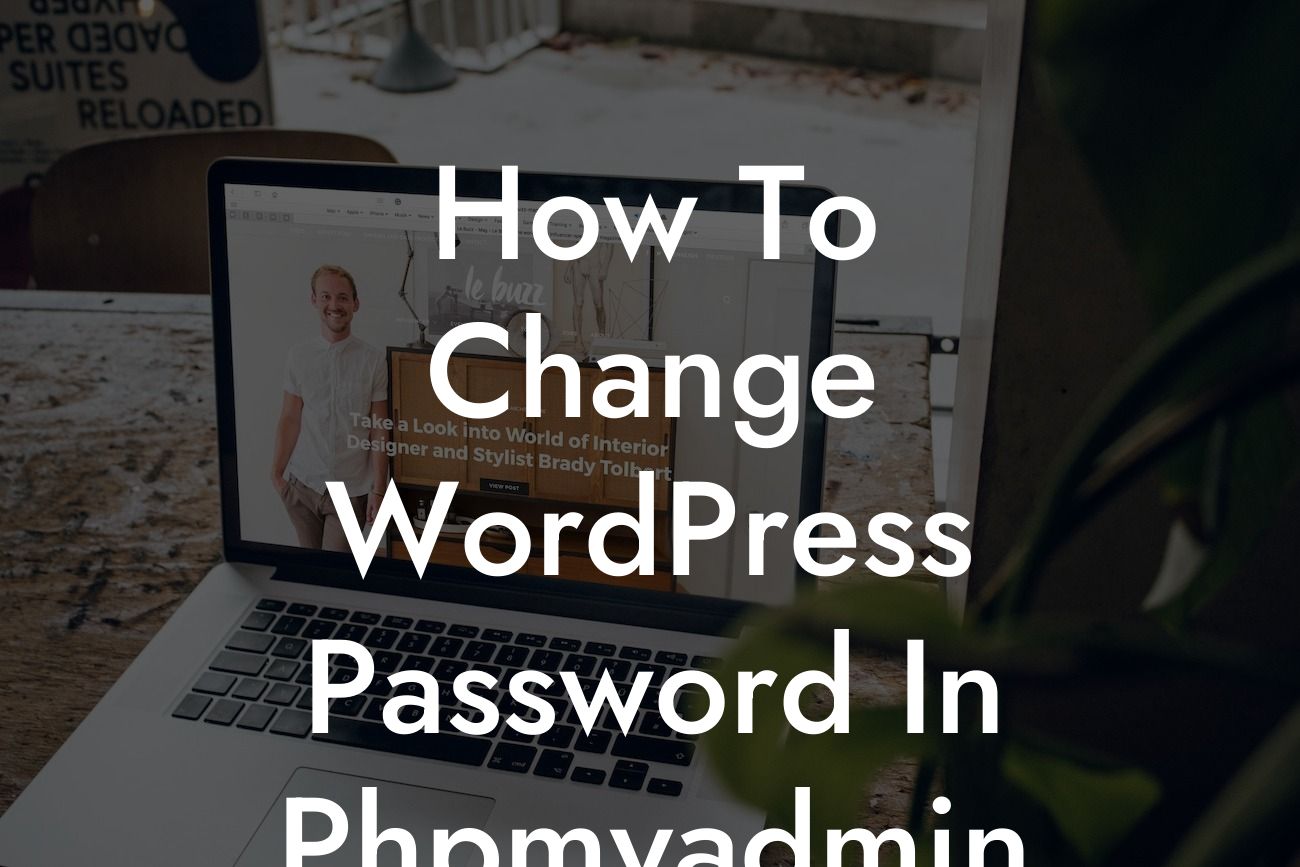In today's digital age, securing your online presence is of utmost importance. One crucial aspect of maintaining a secure website is regularly changing your WordPress passwords. While changing your password through the WordPress dashboard is a straightforward process, there may be instances where you need to take a more advanced approach. This is where phpMyAdmin comes into play. In this guide, we will walk you through the steps to change your WordPress password using phpMyAdmin, ensuring your website remains secure from potential threats.
Changing your WordPress password in phpMyAdmin may sound intimidating, but rest assured, it's not as complicated as it seems. Here are the step-by-step instructions to guide you through the process:
1. Accessing phpMyAdmin:
The first step is to access phpMyAdmin. You can usually find it in your web hosting control panel or by accessing your website's backend through the cPanel. Once you're in, locate the database that corresponds to your WordPress site.
2. Finding the wp_users table:
Looking For a Custom QuickBook Integration?
Within your WordPress database, find the table named "wp_users." Click on it to view its contents.
3. Locating the user:
Look for the user whose password you want to change. Typically, this will be your own user account, but it can also apply to other users if you have the necessary permissions.
4. Generating a new password hash:
Before changing the password, you need to create a password hash. Several online hash generators can help you with this. Alternatively, you can use a PHP script or a WordPress plugin specifically designed for password hashing. Generate a new password hash and remember to keep it secure.
5. Updating the password:
Within the wp_users table, locate the row corresponding to the user whose password you want to change. Look for the user_login column and find the specific row that matches your username or email address. Then, in the user_pass column, replace the existing password hash with the new one you generated.
6. Safely storing your password:
It's crucial to ensure your password is stored securely. Instead of saving it in plain text, you need to encrypt it using the MD5 or SHA encryption algorithm. This step ensures that even if someone gains unauthorized access to your database, they won't be able to decipher your password.
How To Change Wordpress Password In Phpmyadmin Example:
Let's consider a scenario where Sarah, a small business owner, wants to change her WordPress password using phpMyAdmin. By following the steps outlined above, she successfully generates a new password hash and updates it in the wp_users table. Sarah can now log in to her WordPress dashboard with enhanced security, protecting her website and sensitive data.
Congratulations! You've successfully learned how to change your WordPress password using phpMyAdmin. By taking this proactive step, you have significantly enhanced the security of your website. Remember to explore other informative guides and powerful plugins offered by DamnWoo to further elevate your online presence. Don't forget to share this article with fellow small business owners and entrepreneurs who can benefit from this knowledge. Stay tuned for more expert tips and tricks from DamnWoo!













